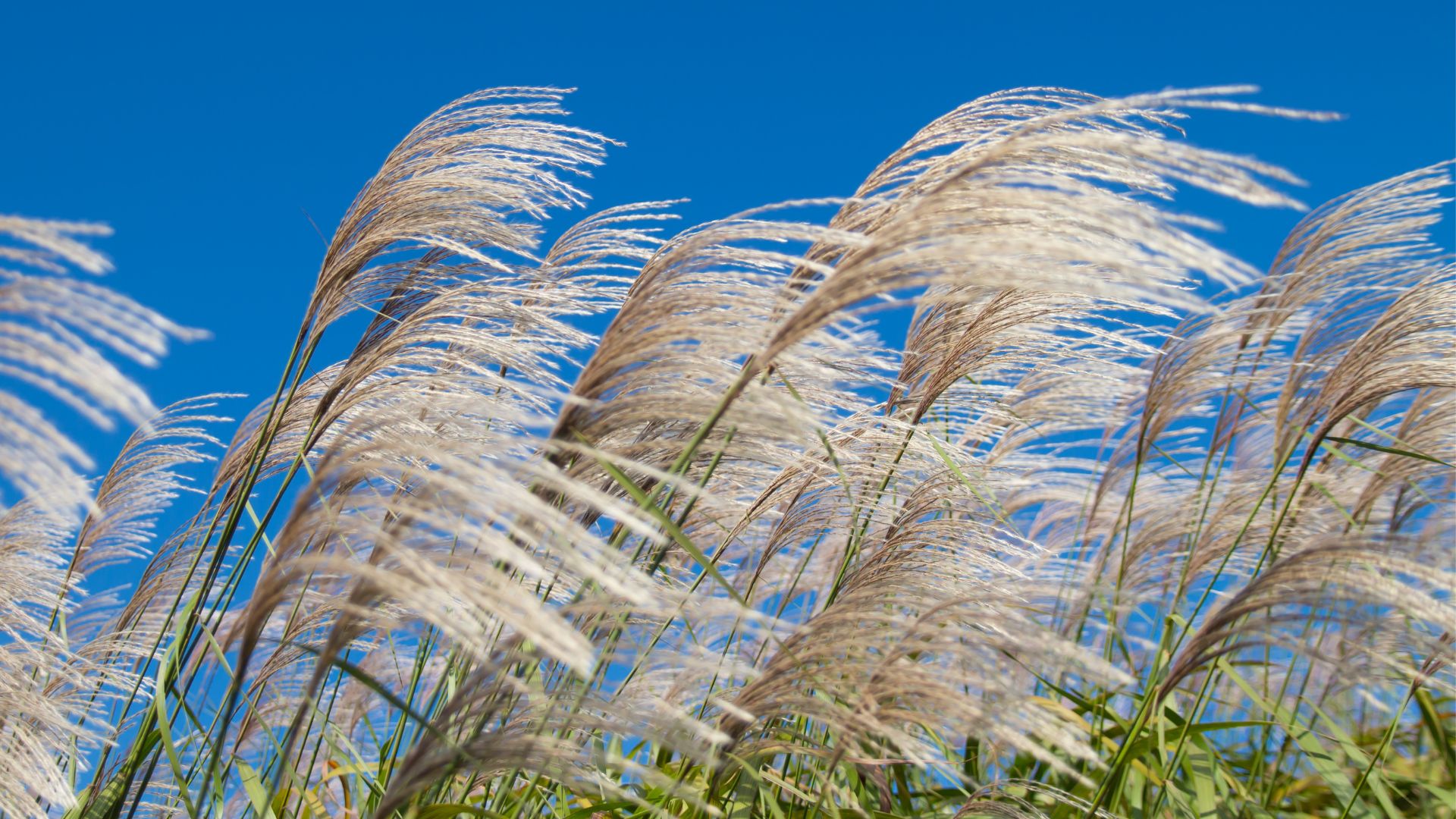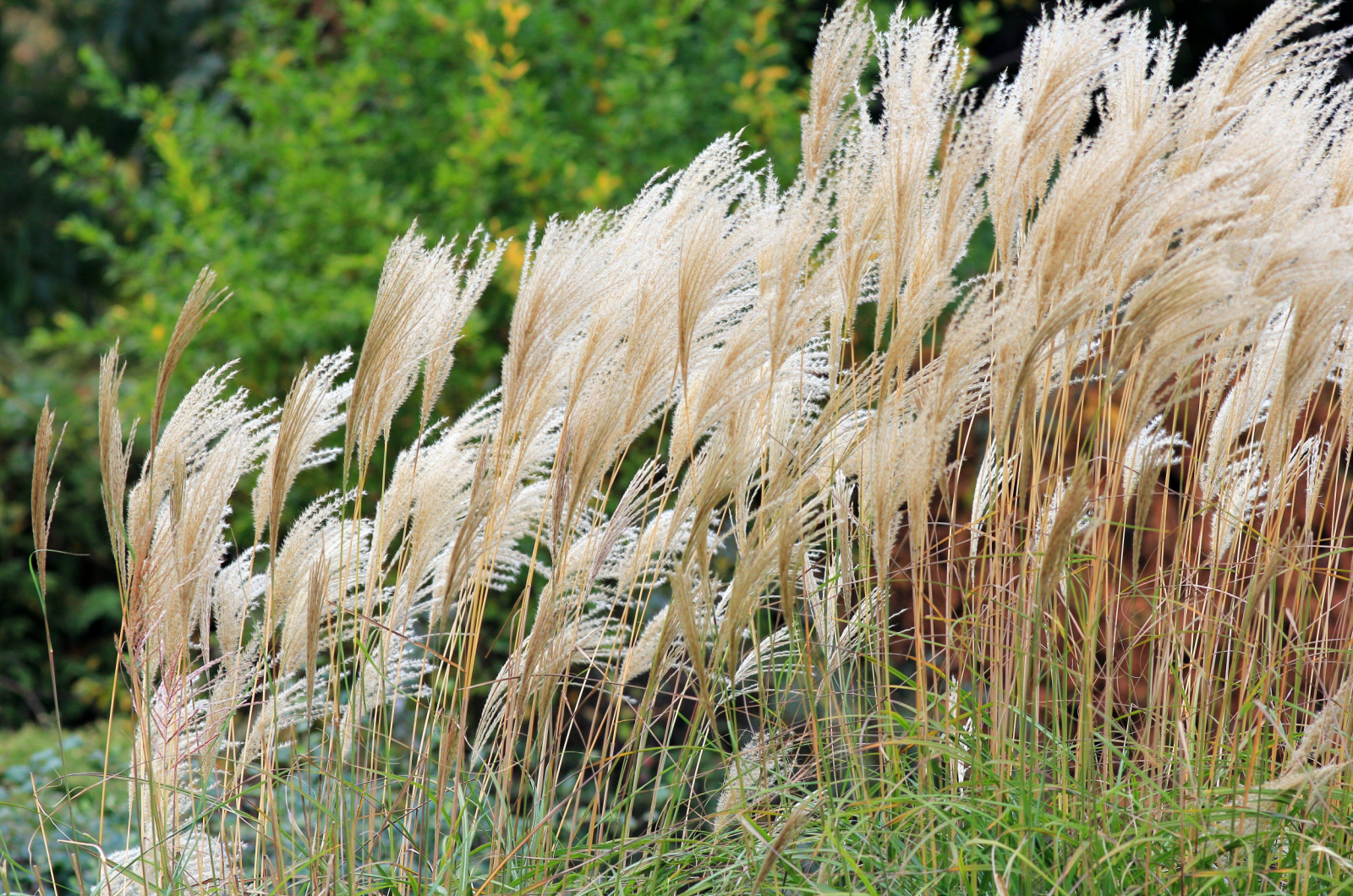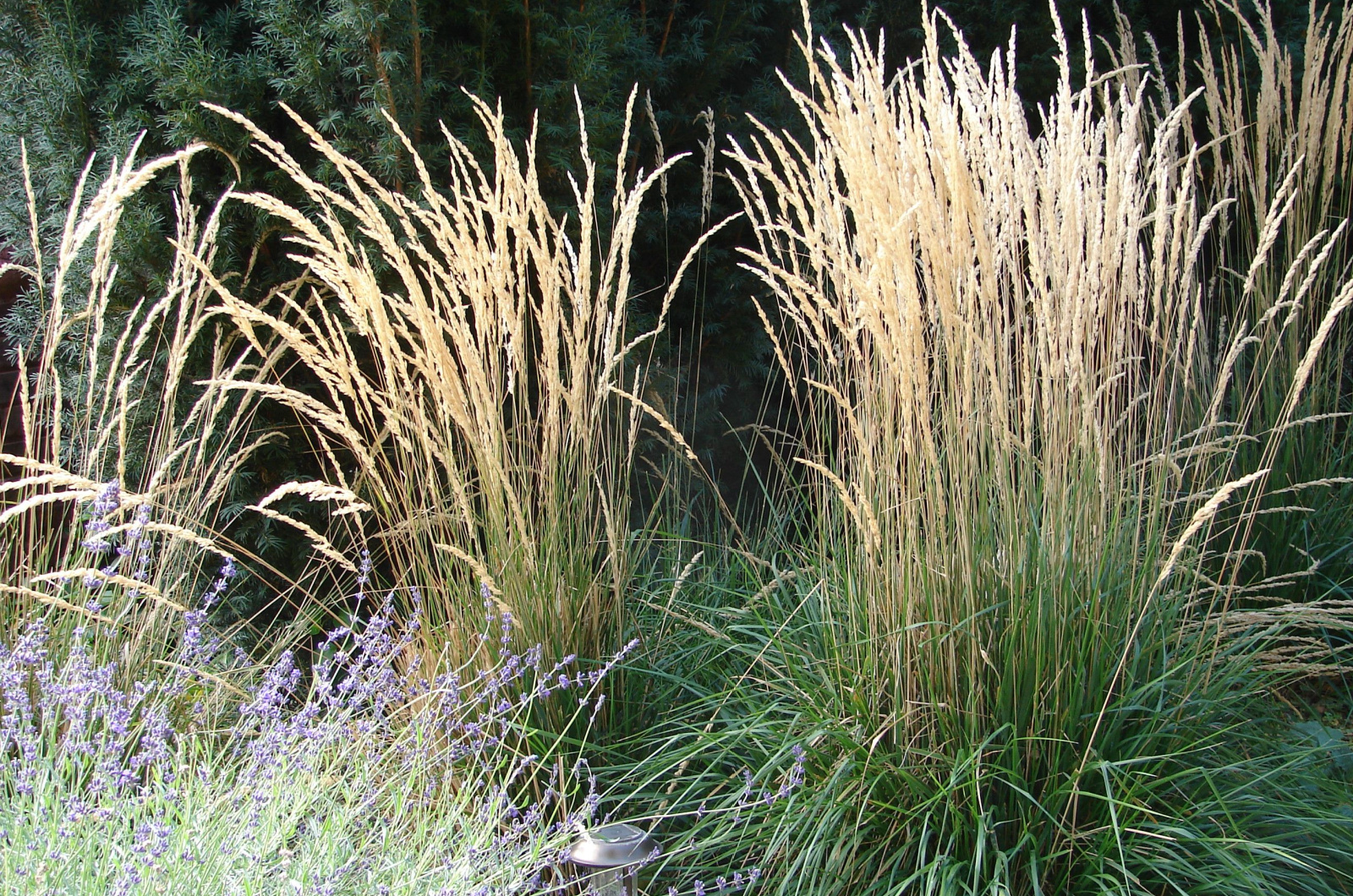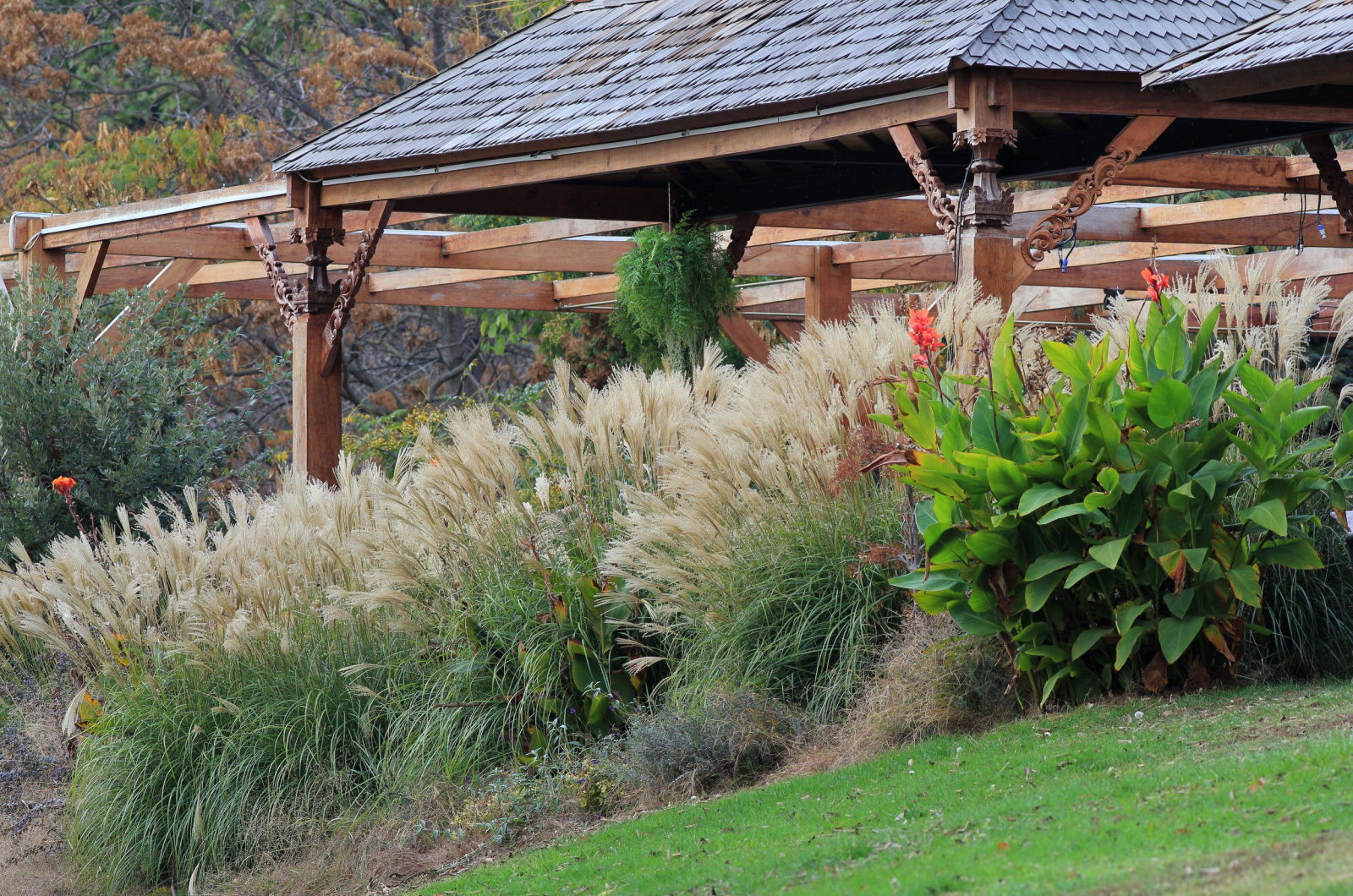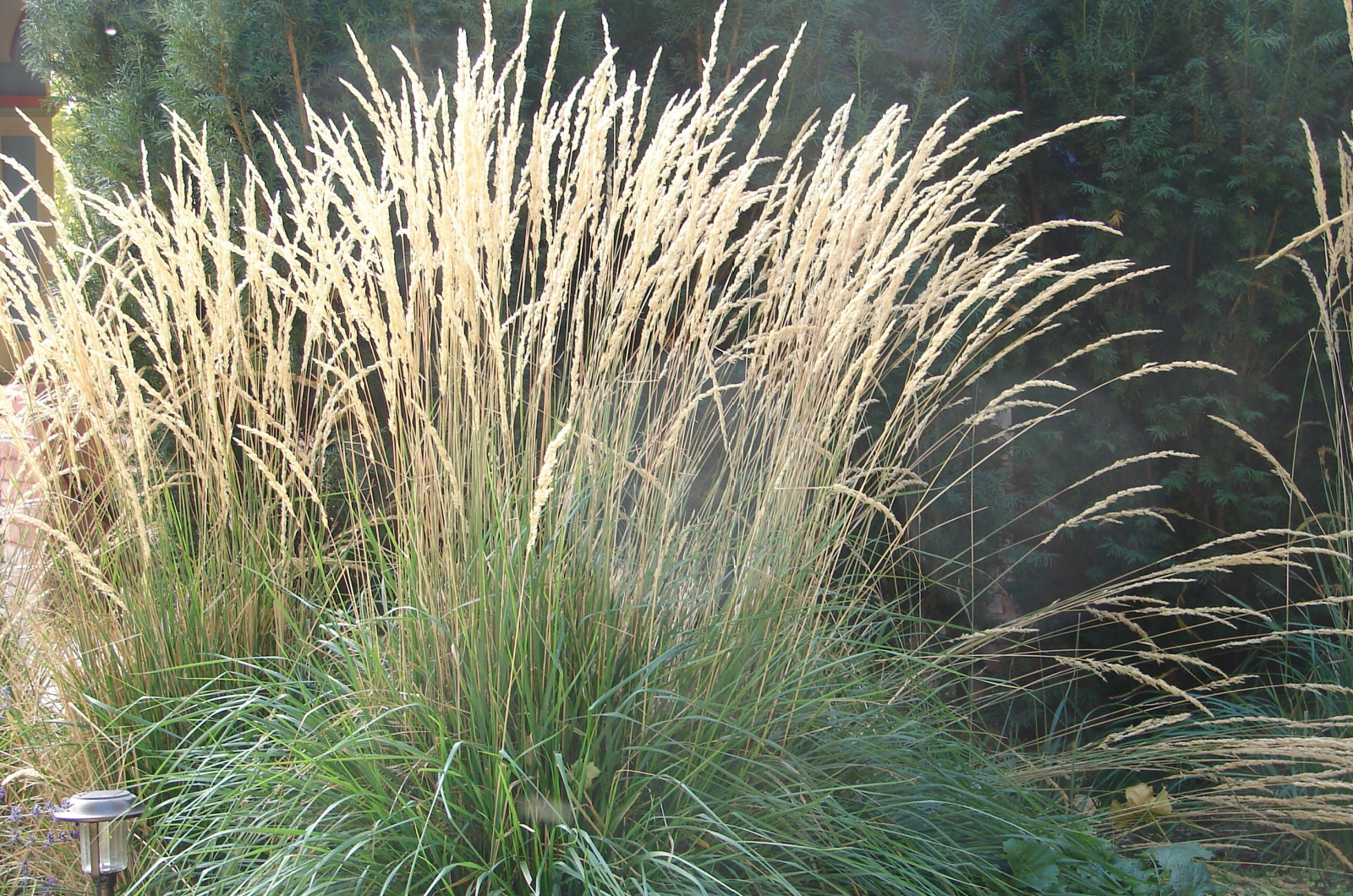Exotic grasses are losing their popularity because of their invasive nature and native grasses stealing the show. While planting native grasses is an excellent idea, there’s no need to forget about exotic types completely.
Feather reed grass is a captivating plant from the Calamagrostis genus and is a hybrid of two species – C. arundinacea and C. epigejos. Parent plants are prolific self-seeders and are considered invasive.
However, reed grass doesn’t set fertile seeds so you don’t need to worry that it will take over your yard.
In this article, I’ll show you how to grow reed grass and tell you more about its most famous variety, Karl Foerster, and also introduce you to other cultivars that are just as beautiful.
More About Karl Foerster Reed Grass
We have to thank German nurseryman Karl Foerster for this exotic grass variety. He discovered it in a botanic garden in the 1930s.
It wasn’t until the 1950s that he introduced this grass to the German public but he initially referred to it as Stricta. Well, it would be pretty odd if he named a plant after himself!
Of course, the name was later changed to honor its discoverer and the grass came to the US market in the 1960s. Due to its extraordinary beauty, this grass became popular in no time and was seen as a trademark of New American Gardens.
This plant species has a slender and vertical growth habit that makes gardens look neat throughout the entire season.
In the middle of the season, captivating light green foliage develops into a fountainlike arch that gracefully stands below the flower stalks. The most beautiful feature of this species are the golden seed heads.
Believe it or not, the flowering stems make up approximately ⅓ of the entire plant. Karl Foerster grass can reach 6 feet; the blossoms come out in silver-purplish tones and have a feathery texture.
Once the plant matures, the blossoms turn to spectacular narrow plumes.
This is by far the most popular reed grass type and looks even better when combined with long-blooming perennials or shrub species.
Interestingly, many landscapers don’t even know that there are other varieties aside from Karl Foerster, but in my humble opinion, they deserve the same attention.
Other Varieties To Select
Let’s see some other types of feather reed grass and some newer cultivars.
Avalanche Feather Reed Grass
This reed grass has white stripes running down the middle of the deep green blades, making it unique and easily recognizable.
Lush and vibrant foliage develops into an arching form and gives a special touch of beauty to your spring garden. The flowering stalks steal the show when summer arrives and new blossoms have a silverish appearance which pairs perfectly with stripes on the blades.
As the season progresses, the bright purple blossoms provide a nice contrast to the crisp variegation. Once the blossoms fade away, the seed heads turn golden for a short while before becoming a bright orange-brown with hints of copper for the last part of the summer.
When compared to its famous cousin, Avalanche is a couple of inches shorter and has a more slender appearance.
Hello Spring Feather Reed Grass
This variety is often confused with Overdam grass but it grows faster and is a more resilient type.
The foliage has wide and creamy white edges with dark green lines down the middle, and it’s most colorful in early spring. As the summer goes on, the color becomes less noticeable, but let’s be honest, who’s paying attention to the leaves when the flowers are in full bloom?
Plumes open on the first day of the summer and look enchanting for a couple of weeks before reducing in size. In the fall, the bronze-tan seed heads and stems eventually turn a straw-yellow color; they’ll shatter by the end of the season.
El Dorado Feather Reed Grass
This variety has green leaves with prominent golden stripes running down the middle of each blade and that’s what makes it different from its famous cousin.
In early spring, you might notice that some of these stripes appear white, but this doesn’t last long. As a nice touch, the golden-and-green foliage goes well with the honey-yellow flower stems that rise from the bushy clumps in late spring.
The bright purple flowers, which keep some color as they mature, wonderfully complement the yellow stems. As the season progresses, the blossoms turn a light wheat color.
The Karl Foerster variety is definitely the most resilient but El Dorado comes the closest when compared to other reed grass varieties.
El Dorado makes a perfect focal point, but for me, it looks best when planted in groups.
Lighting Strike Feather Reed Grass
This variety, similarly to other cousins, features wide, creamy white stripes in the middle of its deep green leaves. What’s unexpected, though, is the greenish-yellow to light-gold stripes on its new spring leaves. However, these hues fade as the weather gets warmer.
In early summer, tall yellow stems hold up fluffy purple blossoms. A bit later, the seed heads become a distinctive bronze-orange color on golden stems before everything turns tan.
The leaf colors of this variety are similar to those of Avalanche, but the plant is larger and has richer-colored seed heads.
Cheju-do Reed Grass
The last variety I’ll show you is Cheju-do; you’ll often hear that this is a dwarf variety of Karl Foerster. It has a shorter, rounded shape, which is a nice change from the tall, upright varieties.
Its light green blades have soft, silvery hairs that shimmer on sunny days and in the morning dew. Cheju-do also features 6 inch long and 1-inch wide pink and green plumes. When compared to Korean reed grass, the Cheju-do variety doesn’t have such fluffy plumes.
The plumes open in the middle of the summer and turn golden tan on reddish-brown stems in the fall; the foliage also becomes bronze in the fall.
Reed Grass Growing Guide
Ornamental grass species, including reed grass, are always an excellent choice for landscaping. But appearance isn’t the only reason why we grow these species. They help the soil retain well-needed moisture and their fibrous roots can help you prevent erosion.
Luckily, these plants don’t require much to thrive. Let’s see their preferred conditions!
Where To Plant
When planting your reed grass, you should start by finding a spot in your yard that has moist and free-draining soil. However, if you don’t find such a location, these grasses can adapt to heavy clay soils.
All reed grass varieties perform best in full sun or partial shade. Do not plant them in fully shaded areas because they can’t produce an abundance of blossoms in such conditions.
The only exception is Korean reed grass because its native habitat is deciduous woods so it tolerates shades better.
If you live in hot southern climates, it would be best to plant your reed grasses in a spot that receives some shade during the hottest parts of the day.
How To Plant
I recommend planting your reed grass in the fall but spring planting may also work well.
The reed grass transplants you purchase in nurseries may get rootbound so make sure you loosen them before planting.
Simply dig a hole, loosen the clump, and put it in the hole. Add soil and pack it well around the reed grass base. That’s it!
How To Prune
The species and cultivars within the genus Calamagrostis are considered to be cool-season grasses. This means that they display new growth as soon as the spring arrives.
You should cut down the old reed grass clumps every year; the best time to do it is late winter.
Korean feather reed grass and Cheju-do varieties display new growth a little bit later than other varieties but they also perform best when cut back by the late winter.
How To Divide
Reed grass clumps require rejuvenation and the best way to do this is by dividing them. This will give you more reed grass plants because division is the common propagation method.
Divide and propagate in spring or fall so that the plant has enough time to adapt to a new environment.
How To Use Reed Grasses
Since the vast majority of reed grasses have an upright growth habit, they’re suitable for many landscape designs.
For instance, you can group plants together and they can act as a privacy screen and keep you protected from nosy neighbors (that’s my favorite feature).
These plants may also serve as a spectacular backdrop for other, shorter plant species.
If you want to add some height or extra flair to your garden, nothing will do a better job than feather reed grass. A tall and upright shape makes an amazing focal point and perfectly complements other perennials in containers and plants used in garden borders.
Another great thing about reed grass is that it can add texture to your landscape, especially if you plant it in multiple areas of your garden. This planting method helps you connect different planting areas and makes everything look cohesive.
Reed grass will help you transform your garden into a breathtaking sanctuary. All you need to do is roll up your sleeves and follow our guidelines on planting and caring for this beauty! Happy growing!

